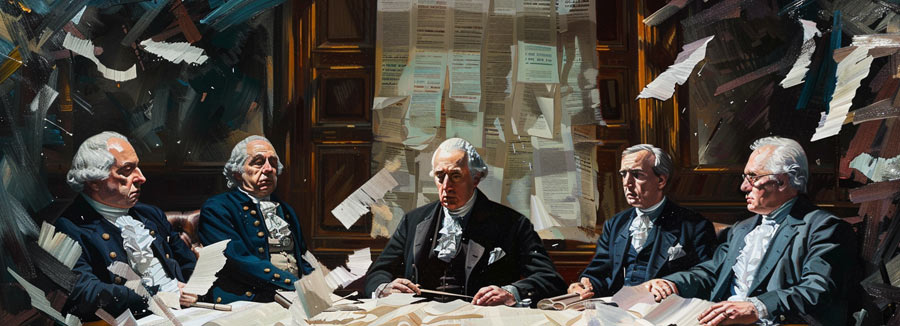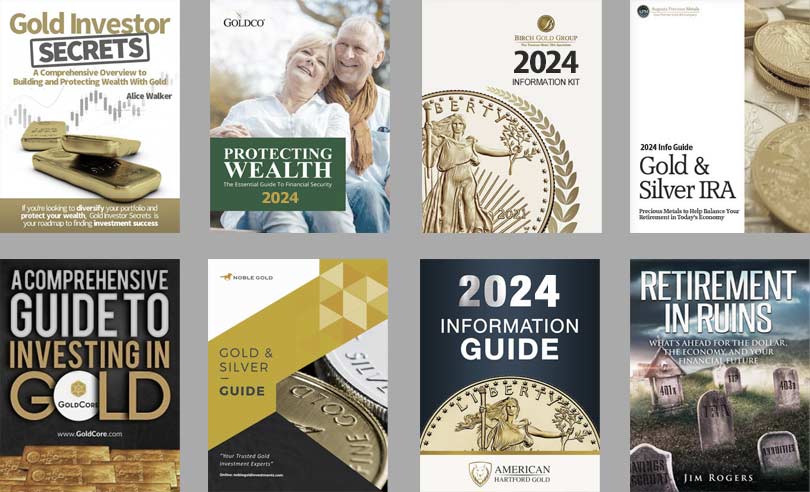
Many prominent American founders warned us about paper money…
 Bullion.Directory precious metals analysis 04 April, 2024
Bullion.Directory precious metals analysis 04 April, 2024
By Mike Maharrey
Journalist, analyst and author at Money Metals Exchange
Thomas Paine may have summed it up best:
“The evils of paper money have no end.”
In an 1814 letter to Thomas Cooper, Thomas Jefferson was prophetic.
“Every thing predicted by the enemies of banks, in the beginning, is now coming to pass. We are to be ruined now by the deluge of bank paper as we were formerly by the old Continental paper.”
It almost sounds like Jefferson was warning about our situation today, but he was actually predicting the depression of 1815-1821 and the panic of 1819. The later years of that economic downturn featured widespread foreclosures, bank failures, unemployment, a collapse in real estate prices, and a slump in agriculture and manufacturing.
It was a different time, but the root cause of that economic crisis was the same as what we face today. In a letter to John Adams, Jefferson warned things would never change until people understood the underlying problem.
“The evils of this deluge of paper money are not to be removed until our citizens are generally and radically instructed in their cause & consequences.”
In their correspondence, Jefferson and Adams also discussed the recently published Treatise on Political Economy by Destutt de Tracy. In a letter to Jefferson, Adams cited a passage calling fiat money printing more “ruinous and a greater theft than empires of old shaving off a little gold from their coins and passing them off as full-weight.”
“A theft of greater magnitude & still more ruinous is the making of paper. It is greater because in this money there is absolutely no real value. It is more ruinous because by its gradual depreciation during all the time of its existence it produces the effect which would be produced by an infinity of successive deteriorations of the coin.”
Adams told Jefferson it was akin to thievery and Americans were as guilty as any other country – even more so.
“That is to say an infinity of successive felonious larcenies. If this is true as I believe it is we Americans are the most thievish people that ever existed, we have been stealing from each other for an hundred & fifty years.”
Unfortunately, Americans never learned these lessons. In the years since, the U.S. completely abandoned the gold standard, with President Richard Nixon severing the final tie in 1972.
The consequences were predictable.
When he announced the closing of the gold window, Nixon said, “Let me lay to rest the bugaboo of what is called devaluation,” and promised, “Your dollar will be worth just as much as it is today.”
This was a lie.
The purchasing power of a 1971 dollar is equal to less than 12 cents today.
This demonstrates what Jefferson wrote long before the economic downturn he saw unfolding in the early 1800s.
“Paper is poverty … it is only the ghost of money, and not money itself.”
Jefferson was echoing his friend Thomas Paine. Paine wrote extensively about the dangers of paper money, going as far as to call it evil.
“Money is Money, and Paper is Paper. All the invention of man cannot make them otherwise. The alchemist may cease his labors, and the hunter after the philosopher’s stone go to rest, if paper can be metamorphosed into gold and silver, or made to answer the same purpose in all cases.”
Paine went on to say paper money turned everybody into “stock jobbers,” a derogatory term for people who made a living on stock market manipulation and frontrunning.
“One of the evils of paper money is that it turns the whole country into stock jobbers. The precariousness of its value and the uncertainty of its fate continually operate, night and day, to produce this destructive effect. Having no real value in itself it depends for support upon accident, caprice, and party; and as it is the interest of some to depreciate and of others to raise its value, there is a continual invention going on that destroys the morals of the country.”
Many other prominent founding-era figures denounced paper money.
George Mason agreed with Paine’s evaluation that paper money is “evil.”
“The laws making paper currency a legal tender have produced great and numerous evils.”
Richard Henry Lee wrote to James Madison, saying, “Knaves assure, and fools believe, that calling paper money, and making it tender, is the way to be rich and happy.”
Patrick Henry warned that “paper money would be the bane of this country. I detest it.”
And George Washington scolded Rhode Island Superior Court Judge and former Deputy Governor Jabez Bown in a 1787 letter.
“Paper money has had the effect in your State that it ever will have, to ruin commerce – oppress the honest, and open a door to every species of fraud and injustice.”
Even Alexander Hamilton warned about the dangers of a deluge of paper.
“To emit an unfunded paper as the sign of value ought not to continue a formal part of the Constitution, nor ever hereafter to be employed; being, in its nature, pregnant with abuses, and liable to be made the engine of imposition and fraud; holding out temptations equally pernicious to the integrity of government and to the morals of the people.”
The Real Money Alternative to the “Evils” of Paper
The founding generation believed in real money – gold and silver. They understood that gold and silver could not be easily manipulated and printed for government purposes like paper and that it would retain its value over time.
In an 1813 letter to John Epps, Thomas Jefferson declared gold and silver the best form of money.
“Specie is the most perfect medium, because it will preserve its own level; because having intrinsic and universal value, it can never die in our hands.”
He went on to write:
“The trifling economy of paper, as a cheaper medium, or its convenience for transmission, weighs nothing in opposition to the advantages of the precious metals… it is liable to be abused, has been, is, and forever will be abused, in every country in which it is permitted.”
Proving that there’s nothing new under the sun, Paine anticipated one of the arguments against hard money. Many claimed we need paper money because there aren’t sufficient amounts of gold and silver. Paine countered, “This, so far from being a reason for paper emissions, is a reason against them.” And he went on to accurately predict what would happen if paper were allowed to compete with real money.
“As gold and silver are not the productions of North America, they are, therefore, articles of importation; and if we set up a paper manufactory of money, it amounts, as far as it is able, to prevent the importation of hard money, or to send it out again as fast it comes in; and by following this practice we shall continually banish the specie, till we have none left, and be continuously complaining of the grievance instead of remedying the cause.”
This is why the Constitution made gold and silver the only acceptable forms of money. Among James Madison’s papers were notes for a 1786 speech opposing paper money.
“Right of regulating coin given to Congs. for two reasons. 1. for sake of uniformity. 2. to prevent fraud in States towards each other or foreigners. Both these reasons hold equally as to paper money.”
We can’t say we weren’t warned.
We ignored the wisdom of the founding generation and we got exactly what was predicted. We have a deteriorating currency that will eventually collapse into oblivion.
Mike Maharrey


Mike Maharrey is a well-known author, journalist, financial analyst and writer at Money Metals Exchange, one of our top-rated US dealers and two-times winner of Bullion Dealer of the Year
He holds a BS in accounting from the University of Kentucky and a BA in journalism from the University of South Florida. Mike also serves as the national communications director for the Tenth Amendment Center and the managing editor of the SchiffGold website.
This article was originally published here
Bullion.Directory or anyone involved with Bullion.Directory will not accept any liability for loss or damage as a result of reliance on the information including data, quotes, charts and buy/sell signals contained within this website. Please be fully informed regarding the risks and costs associated with trading in precious metals. Bullion.Directory advises you to always consult with a qualified and registered specialist advisor before investing in precious metals.












Leave a Reply